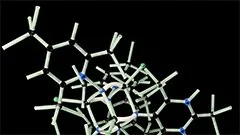Introduction
Soil ecology is the study of the interactions between living organisms, such as plants, animals, and microorganisms, and their physical environment, namely soil. Agroecology, on the other hand, is an integrated scientific discipline that studies the ecological processes in agricultural systems to increase sustainability, productivity, and resilience. This course aims to provide a comprehensive understanding of these two interconnected fields and their implications for agriculture and ecosystems.
Background
The study of soil ecology and agroecology is crucial due to the significant roles that soils play in supporting life on Earth, as well as the increasing demand for food production in a rapidly growing global population. Understanding these ecological processes can lead to the development of sustainable agricultural practices and ecosystem conservation strategies.
Soil Ecology
Soil Composition and Properties
Soil is a complex mixture of minerals, organic matter, water, air, and living organisms. The mineral component consists mainly of silicate rocks like sand, silt, and clay. Organic matter, primarily derived from plant and animal residues, plays a vital role in soil fertility and nutrient cycling.
Soil Formation and Classification
Soils are formed through the interaction between parent material, climate, organisms, topography, and time. Based on their properties, soils can be classified into various categories, such as sandy, loamy, clayey, and peaty soils. This classification is essential for understanding soil behaviors and selecting appropriate agricultural practices.
Soil Biota
Soil contains a vast array of microorganisms, including bacteria, fungi, archaea, protozoa, and nematodes. These organisms play crucial roles in nutrient cycling, decomposition, and soil aggregation. Understanding their interactions with each other and the abiotic environment is essential for maintaining soil health and productivity.
Soil Microorganisms: Bacteria, Fungi, and Protozoa
Soil microorganisms are responsible for breaking down organic matter, cycling nutrients, and inhibiting plant pathogens. For example, mycorrhizal fungi form symbiotic relationships with plant roots, increasing nutrient uptake efficiency. Bacteria and protozoa also play essential roles in decomposition and nutrient cycling.
Soil Fauna: Nematodes, Earthworms, and Arthropods
Soil fauna contribute to soil structure formation, decomposition, and nutrient cycling. For example, earthworms create burrows that improve soil aeration and water infiltration. Nematodes feed on various soil organisms, helping control populations of pests and pathogens. Arthropods such as ants and termites build complex networks of tunnels that contribute to soil structure formation and nutrient cycling.
Soil Fertility and Nutrient Cycling
Soil fertility is crucial for plant growth and agricultural productivity. Nutrients are cycled through various biotic and abiotic processes, such as decomposition, mineralization, immobilization, and leaching. Understanding these cycles can help develop sustainable agricultural practices that maintain soil fertility and reduce nutrient loss.
Agroecology
Agricultural Systems and Ecological Processes
Agroecosystems are complex networks of interactions between crops, livestock, soil, water, air, and organisms. Understanding these ecological processes can lead to the development of sustainable agricultural practices that increase productivity, resilience, and ecosystem health.
Diversity and Integration in Agroecosystems
Diversity at various scales—from crop species and genetic diversity to habitat structures and biodiversity—can improve agroecosystem resilience and sustainability. Integrating different components of the agroecosystem, such as crops, livestock, and cover crops, can enhance nutrient cycling, pest management, and soil health.
Sustainable Agriculture Practices
Several sustainable agriculture practices can help maintain soil health, increase productivity, and conserve ecosystems. These practices include:
Agroforestry
Agroforestry is a land use system that integrates trees into agricultural landscapes. It provides various benefits, such as increased biodiversity, soil conservation, and shade for crops and livestock.
Organic Farming
Organic farming relies on ecological processes to maintain soil fertility and control pests and diseases. It avoids the use of synthetic fertilizers and pesticides, instead relying on crop rotations, cover crops, and biological pest control.
Conservation Agriculture
Conservation agriculture focuses on maintaining soil cover, minimizing soil disturbance, and promoting permanent soil organic cover. This practice helps conserve soil moisture, reduce erosion, and maintain soil structure and fertility.
Challenges and Opportunities
Despite the potential benefits of sustainable agricultural practices, several challenges remain. These include limited adoption rates, lack of supportive policies, and the need for long-term investments in research and development. However, by addressing these challenges, we can create more resilient and productive agroecosystems that support both human needs and ecosystem health.
Conclusion
Soil ecology and agroecology are critical fields of study for understanding the intricate relationships between soils, plants, animals, and ecosystems. By applying these principles in agricultural practices, we can develop sustainable systems that increase productivity, conserve resources, and support ecosystem health. The challenges ahead may be significant, but by working together and investing in research and development, we can create a more resilient and sustainable future for our planet.
MCQ: Test your knowledge!
Do you think you know everything about this course? Don't fall into the traps, train with MCQs! eBiologie has hundreds of questions to help you master this subject.
These courses might interest you
Create a free account to receive courses, MCQs, and advice to succeed in your studies!
eBiologie offers several eBooks containing MCQ series (5 booklets available free for each subscriber).



